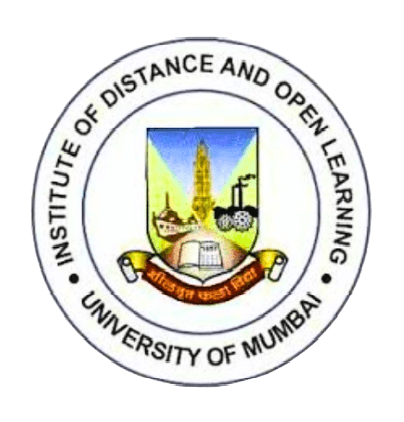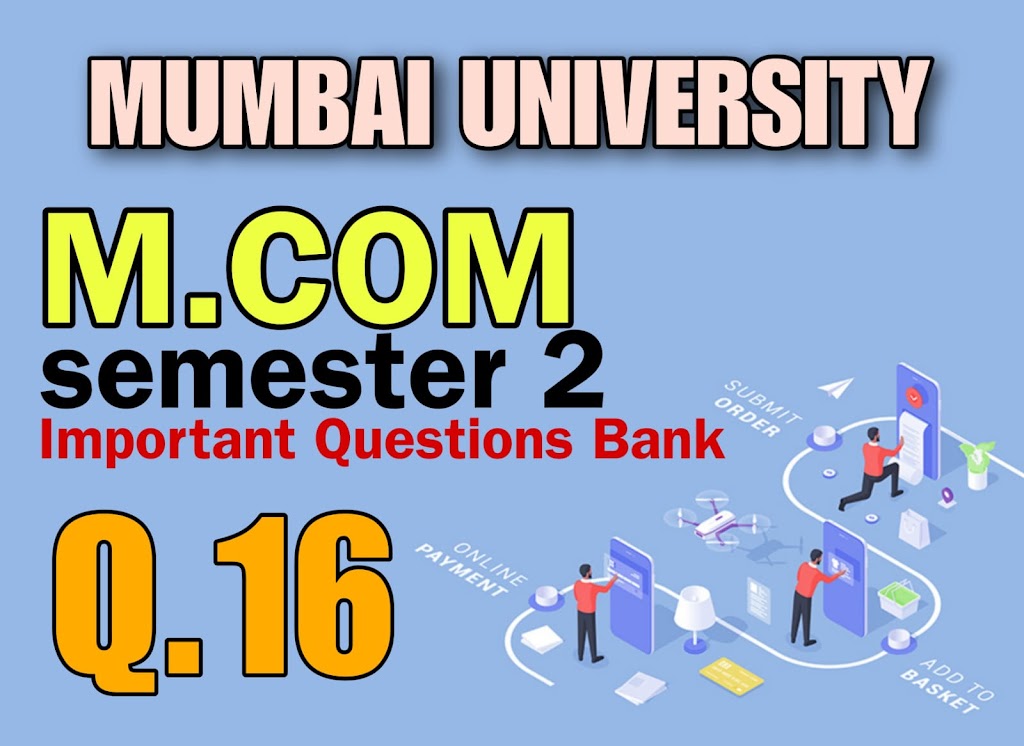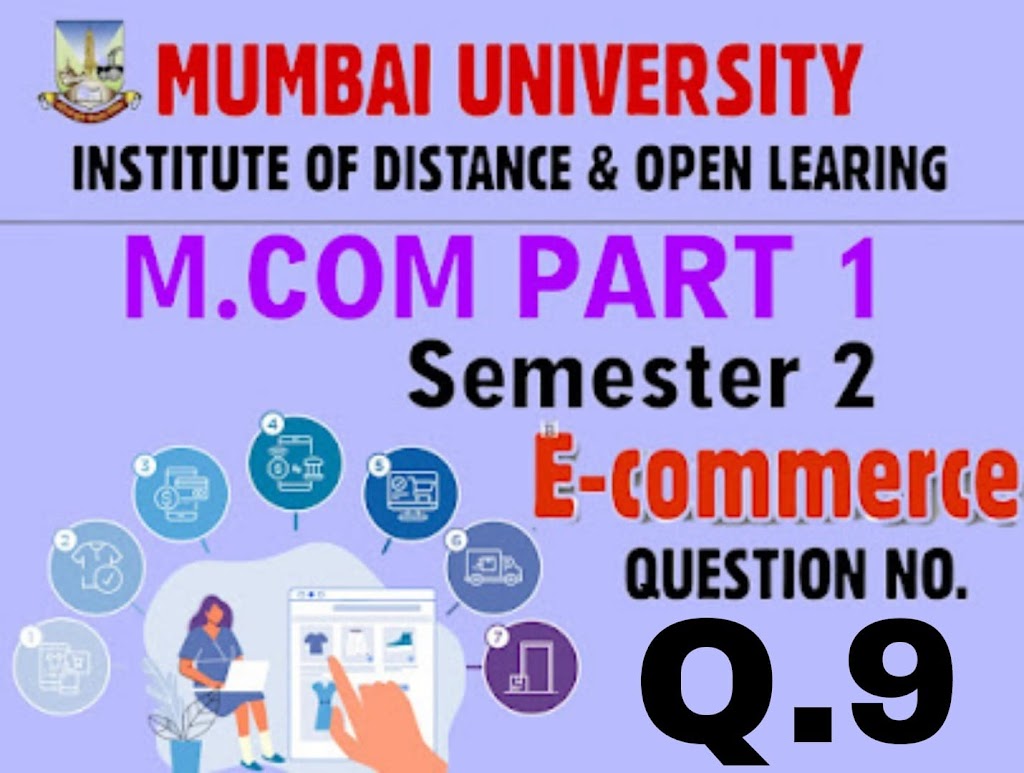E-commerce m com semester 2 important questions and answers pdf 2024
M.com Part 1 (Semester 2) E- COMMERCE Most Important Question Bank for Current Exam Q.16 Discuss the features of e-enterprise ANS: 1. Flat Organisation Structure :- The nature of organisation structure in e-enterprise is flat. There are limited levels of management.There is limited number of workforce including managers, also the administration and managent overheads are lower. 2. Global Reach:- E-enterprise permits global reach. Due to internet and web technology , traditional business organisation defination has undergone a change where scope of the enterprise now includes other company location, business partners, customers and vendors. 3. Information Driven :- Due to Interent and web, the e-enterprise is nformation driven rather than paper driven organisation. E-business enterprises is open twenty four hours, and being an public domain; managers,suppliers,customers and business partners can transact business anytime from anywhere. 4. Competitive Advantage :- Internet capabilities have given ebusiness enterprise a competitive advantage to increase the business value. It has opened new channels of business as buying and selling can be done on internet. It enables to reach new markets across the world anywhere du to communication capabilities. It has empowered customers and suppliers through secured access to information to act, wherever necessary. The cost of business operation has come down significantly due to the elimination of paper-driven processes, faster communication and effective collaborative working. The internet based transactions resulted in the reduction of administrative and management overheads, reduction in inventory, quicker delivery of products. 5. Absense of Command Control :- In e-enterprise, organisations are empowered by informaion and knowledge to perform various activities. In e-enterprise, people work in a network environment or in a virtual mode. The decision in e-enterprise are supported by information systems, application packages and decision-support systems. 6. Process driven :- E-business enterprise is more process driven, technology enabled and uses its own information and knowledge to perform activities. In E-business enterprise, most of the activities are electronic-based,use of digital technologies and work on databases,knowledge bases,directories and document repositories. The business process are conducted through enterprise software like ERP(Enterprise Resourse Planning),SCM(Supply chain management) and e-CRM supported by data warehouse, decision support and knowledge management systems. 7. E-business Solutions :- E-business enterprises are using Internet technology, network, and wireless technology for improving the business performance measured in terms of cost, efficiency, competitiveness and profitability. E-enterprise are using e-business solutions to reach faraway locations to deliver product and services. The enterprise solutions like ERP, SCM and e-CRM run on Internet and Wide Area Network(WAN). 8. Transformation :- The paradigm shift to e-enterprise has brought four transformations, namely: Domestic business to global business. Industrial manufacturing economy to knowledge-based service economy. Enterprise resource management to Enterprise network management. Manual document driven business process to paperless automated, electronically transacted business process. 9. Trading of goods and services :- In E-enterptrise, business is conducted electronically. Buying and selling is possible for a wide range of products such books, readymade garments, jewellery, electronic items, white goods and many such goods are bought and sold on internet. Also, a number of services such as banking, insurance, healthcare, education, tourism industry are being managed through internet. 10. Mangement Information Systems :- MIS for e-business is different compared to conventional MIS design of an organisation. The role of MIS in e-business organization is to deal with changes in global market and enterprises. MIS produce more knowledge-based products. Knowledge management system is normally recognised as a part of MIS. It is effectively used for straegic planning for survival and growth, increase in profits, productivity. 11. Challenges for E-enterprise:- The organisation structure should be lean and flat Employees should allow to work from anywhere Re-engineer the processes to cut down process cycle time Make use of groupware technology on internet platform for faster response processing. Enlarge the scope of organisation where customers, suppliers, and others become a part of the organisation with the help of etechnology. Change the organisation behaviour to gain competitive advantage by using e-technolgy to communicate,coordinate and collaborate with customers, suppliers and businss partners. If you want exam most important question bank pdf then you have to pay per subject 100/- rupees only . Contact 8652719712 / 8779537141 Telegram Group Mumbai Univeersity :- https://t.me/mumbaiuniversityidol Suraj Patel Education :- https://t.me/surajpateleducation F.Y.J.C EXAM :- https://t.me/FYJCexam S.Y.J.C EXAM :- https://t.me/SYJCexam F.Y EXAM :- https://t.me/fyexam S.Y EXAM :- https://t.me/syexam T.Y EXAM :- https://t.me/tyexam M.Com Part 1 EXAM :- https://t.me/McomPart1Exam M.Com Part 2 EXAM :- https://t.me/McomPart2Exam M.A EXAM :- https://t.me/mastudentsexam YouTube Channel Learn more: Impotence Medication: A Complete Guide to Treatment Options, Usage, and Expert Insights https://www.youtube.com/channel/UCv8JIY58xfWHUIXVu9wxNHw




